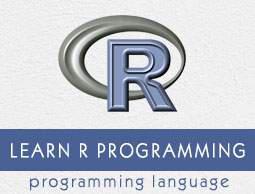R - Strings
Any value written within a pair of single quote or double quotes in R is treated as a string. Internally R stores every string within double quotes, even when you create them with single quote.
Rules Applied in String Construction
The quotes at the beginning and end of a string should be both double quotes or both single quote. They can not be mixed.
Double quotes can be inserted into a string starting and ending with single quote.
Single quote can be inserted into a string starting and ending with double quotes.
Double quotes can not be inserted into a string starting and ending with double quotes.
Single quote can not be inserted into a string starting and ending with single quote.
Examples of Valid Strings
Following examples clarify the rules about creating a string in R.
a <- 'Start and end with single quote'
print(a)
b <- "Start and end with double quotes"
print(b)
c <- "single quote ' in between double quotes"
print(c)
d <- 'Double quotes " in between single quote'
print(d)
When the above code is run we get the following output −
[1] "Start and end with single quote"
[1] "Start and end with double quotes"
[1] "single quote ' in between double quote"
[1] "Double quote \" in between single quote"
Examples of Invalid Strings
e <- 'Mixed quotes"
print(e)
f <- 'Single quote ' inside single quote'
print(f)
g <- "Double quotes " inside double quotes"
print(g)
When we run the script it fails giving below results.
Error: unexpected symbol in:
"print(e)
f <- 'Single"
Execution halted
String Manipulation
Concatenating Strings - paste() function
Many strings in R are combined using the paste() function. It can take any number of arguments to be combined together.
Syntax
The basic syntax for paste function is −
paste(..., sep = " ", collapse = NULL)
Following is the description of the parameters used −
... represents any number of arguments to be combined.
sep represents any separator between the arguments. It is optional.
collapse is used to eliminate the space in between two strings. But not the space within two words of one string.
Example
a <- "Hello"
b <- 'How'
c <- "are you? "
print(paste(a,b,c))
print(paste(a,b,c, sep = "-"))
print(paste(a,b,c, sep = "", collapse = ""))
When we execute the above code, it produces the following result −
[1] "Hello How are you? "
[1] "Hello-How-are you? "
[1] "HelloHoware you? "
Formatting numbers & strings - format() function
Numbers and strings can be formatted to a specific style using format() function.
Syntax
The basic syntax for format function is −
format(x, digits, nsmall, scientific, width, justify = c("left", "right", "centre", "none"))
Following is the description of the parameters used −
x is the vector input.
digits is the total number of digits displayed.
nsmall is the minimum number of digits to the right of the decimal point.
scientific is set to TRUE to display scientific notation.
width indicates the minimum width to be displayed by padding blanks in the beginning.
justify is the display of the string to left, right or center.
Example
# Total number of digits displayed. Last digit rounded off.
result <- format(23.123456789, digits = 9)
print(result)
# Display numbers in scientific notation.
result <- format(c(6, 13.14521), scientific = TRUE)
print(result)
# The minimum number of digits to the right of the decimal point.
result <- format(23.47, nsmall = 5)
print(result)
# Format treats everything as a string.
result <- format(6)
print(result)
# Numbers are padded with blank in the beginning for width.
result <- format(13.7, width = 6)
print(result)
# Left justify strings.
result <- format("Hello", width = 8, justify = "l")
print(result)
# Justfy string with center.
result <- format("Hello", width = 8, justify = "c")
print(result)
When we execute the above code, it produces the following result −
[1] "23.1234568"
[1] "6.000000e+00" "1.314521e+01"
[1] "23.47000"
[1] "6"
[1] " 13.7"
[1] "Hello "
[1] " Hello "
Counting number of characters in a string - nchar() function
This function counts the number of characters including spaces in a string.
Syntax
The basic syntax for nchar() function is −
nchar(x)
Following is the description of the parameters used −
Example
result <- nchar("Count the number of characters")
print(result)
When we execute the above code, it produces the following result −
[1] 30
Changing the case - toupper() & tolower() functions
These functions change the case of characters of a string.
Syntax
The basic syntax for toupper() & tolower() function is −
toupper(x)
tolower(x)
Following is the description of the parameters used −
Example
# Changing to Upper case.
result <- toupper("Changing To Upper")
print(result)
# Changing to lower case.
result <- tolower("Changing To Lower")
print(result)
When we execute the above code, it produces the following result −
[1] "CHANGING TO UPPER"
[1] "changing to lower"
Extracting parts of a string - substring() function
This function extracts parts of a String.
Syntax
The basic syntax for substring() function is −
substring(x,first,last)
Following is the description of the parameters used −
x is the character vector input.
first is the position of the first character to be extracted.
last is the position of the last character to be extracted.
Example
# Extract characters from 5th to 7th position.
result <- substring("Extract", 5, 7)
print(result)
When we execute the above code, it produces the following result −
[1] "act"


